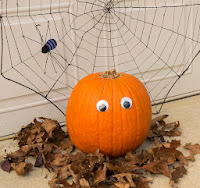Ghost Cat
I was looking out my back door, debating if I wanted to go
out. There were lots of things to do at the end of the year, backyard-wise. I
could cut back the dead hibiscus stalks. The dried hydrangea flowers rebuked me
for not having taken advantage of their beauty when they were full and vibrant
and I should pull them off. The withered tomato vines were still in the
garden. Yet, I stood there doing
nothing. The day was cold and gloomy. Why bother going out when it was so much
better inside?
That’s when I saw it – the ghost cat. I had never seen such
a fully white cat before. It was hustling through as if it was on a mission. I
opened the door and called out, “Hey, cat!” It looked over at me for a
nanosecond before continuing on its way. We grabbed a photo of it just before
it disappeared into the neighbor’s yard.
Was it an albino cat or just a white one? I wasn’t close
enough to see. An albino lacks pigment so its eyes seem pink, reflecting the
blood vessels inside, and its skin is pink, too. Where did this cat come from?
I hadn’t seen it before. But it shook off my lethargy and reminded me of the
year about to pass.
This time of year brings up the ghosts of
thoughts/actions/decisions past. Sometimes they are energizing, sometimes they
are tinged with regret. Yet the seasons always shift, the days move on, and we
are presented with new options. It is tempting to make resolutions for the
coming year, decisions that frequently disappear almost as soon as they are
made, that become the ghosts of the future. They are too definitive, I think.
This year I am making inclinations more than resolutions. I
am inclined toward sending out more of my writing. I am leaning in the
direction of renewing contact with people I like but have let slip away. I am
tending toward being gentler in my approach to life, to laugh a lot more.
Nothing momentous, just simple possibilities.
So on the cusp of 2014, I thank the ghost cat for waking me
up. And I wish all of you the very best of the New Year.
Folk singer Woody Guthrie made his list of resolutions in
1933, when he was 31. He called them Rulin’s and they were quite practical. Did
he follow them? Here they are:
Something about Albino cats:
http://pets.thenest.com/rare-albino-kittens-11242.html















.JPG)
















